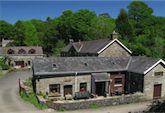Swansea Bay Temperature Chart
TEMPERATURE
The Swansea Bay region has a very mild climate which is around 9ºC higher than average for our latitude mainly due to the influence of The Gulf Stream, a warm surface ocean current that originates in the Gulf of Mexico and flows north-east across the Atlantic, bringing with it humid mild air. The Swansea area is also sheltered from cold northerly winds by the Brecon Beacons mountain range. The closeness to the sea is important as it acts like a blanket in winter keeping the coast milder than inland with sea temperatures ranging from an average of 9ºC in February to 17ºC in July. Indeed, the Swansea area avoids most extremes of cold that occur elsewhere in the U.K. For example, Swansea’s lowest recorded temperature was -10.0ºC on January 26th 1945. That same night in Cardiff it was reputedly cold enough to ”˜freeze the balls off a brass monkey’ at a teeth chattering -16.7ºC. Average temperatures are a pleasant 20ºC in July although temperatures can soar into the high twenties or even low thirties during the hottest summers. When things get a bit too hot, the Gower coastline is a great place to visit because gentle sea-breezes off the Bristol Channel keep things pleasantly cooler.
Swansea Bay Sunshine Chart
SUNSHINE
Sunshine lovers will be pleased to discover that Swansea Bay achieves a good proportion of recorded sunshine in comparison with the rest of the U.K. Notably, whilst cottage bookings reach a peak in August, this figure does not always correspond to the area’s most agreeable weather. May and June usually record the area’s greatest hours of sunshine at around 7.5 hours per day whilst July and August are often more unsettled, albeit slightly warmer on average.
Swansea Bay Rainfall Chart
RAIN
It has been known to rain in the area from time to time! Luckily, there are a number of quality indoor attractions to see when this happens, not to mention the nearby ”˜Waterfall Country’ which is always more spectacular after a drop of ”˜liquid sunshine’. It is of course the combination of ”˜liquid sunshine’ and relatively warm weather that makes the grass of home so green, the sunsets so spectacular, and the view from your cottage windows so much better.
SNOW
We see snow at Plas Farm every year, particularly on the surrounding hill tops. It usually falls in Januray and February, although it can snow anytime between November and April. On average we get about one week of snow per year. Visit www.snow-forecast.com for a snow forecast.
